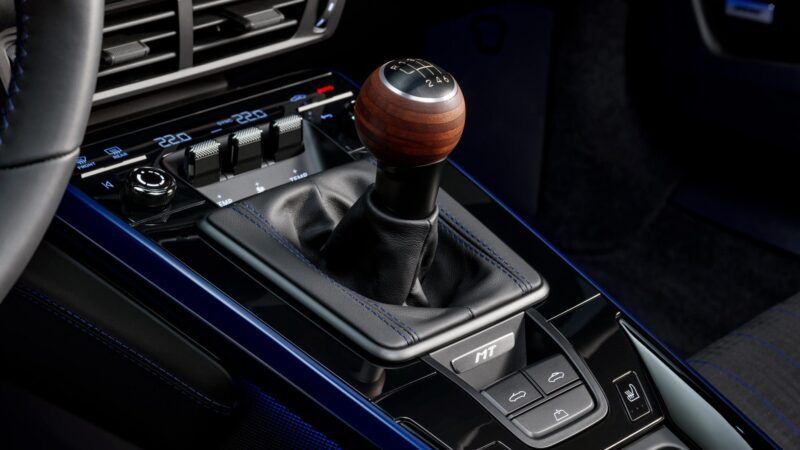Porsche’s traditional design touch comes from a pursuit of performance.
The Porsche Carrera GT is one of the world’s most cherished and collector-worthy supercars. Boasting a V10 engine mounted amidships, rear-wheel drive, and a manual transmission, the Carrera GT is a purist-focused masterpiece, and resides in the highest echelon of dream cars for many collectors and enthusiasts.
While it’s a small detail, one of the most memorable aspects of the Porsche Carrera GT is its use of a wooden shift knob, a vintage-inspired detail that not only highlights the automotive excellence of its manual transmission, but also nods to Porsche’s racing legacy of the past. The wooden shift knob has an intricate story in Porsche’s legacy, and while in the Carrera GT, it provides a charming retro-inspired touch, its original purpose was to push performance-focused innovation forward.
The first use a wooden shift knob in a Porsche was in the 908/03 Spyder, a race car from the 1970s, known for taking on revered challenges like the Targa Florio and the Nürburgring. Back then, in a similar fashion to Porsche’s track-focused GT cars today, weight reduction was one of the most important keys to performance. To that end, Porsche made the 908/03 Spyder with plexiglass, aluminum, and plastic. However, the finishing touch to that weight reduction was with the wooden shift knob.
Noticing that an aluminum, magnesium, or plastic alternative would have weighed much more, Porsche found that a shift knob crafted from mahogany wood, weighing in at only 24 grams, would save nearly 70 percent of the weight compared to an aluminum knob. The unique material went on to showcase attention to detail, and serve as a testament to the fact that in the pursuit of performance perfection, Porsche was willing to leave no stone unturned when it came to weight reduction. Today, walnut wood is used to pay homage to this incredible story in cars like the Carerra GT, and even the current Porsche 911 Carrera T, which uses a wooden shift knob as an indication of its similar principles of purist driving, lightweight engineering, and thrilling performance.


